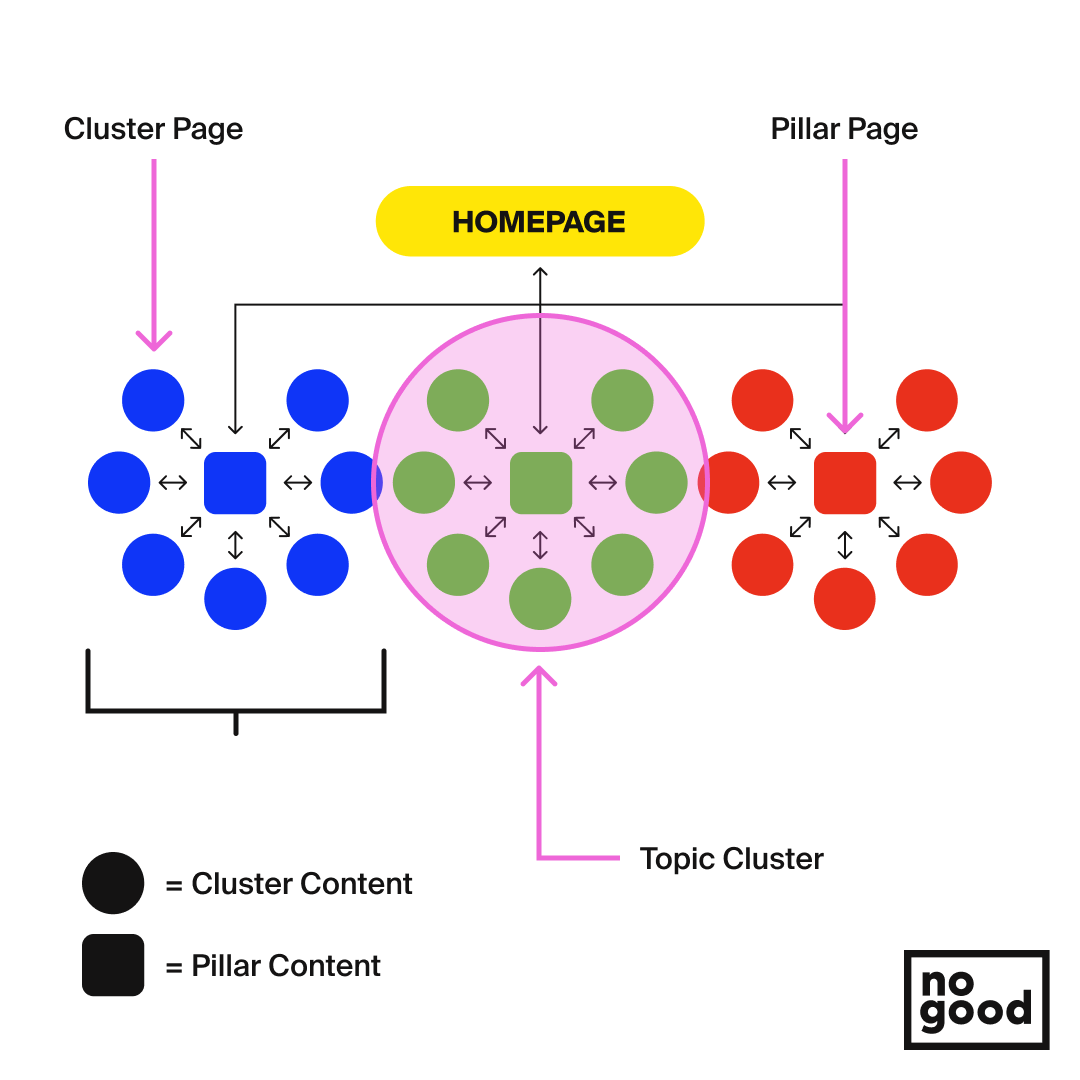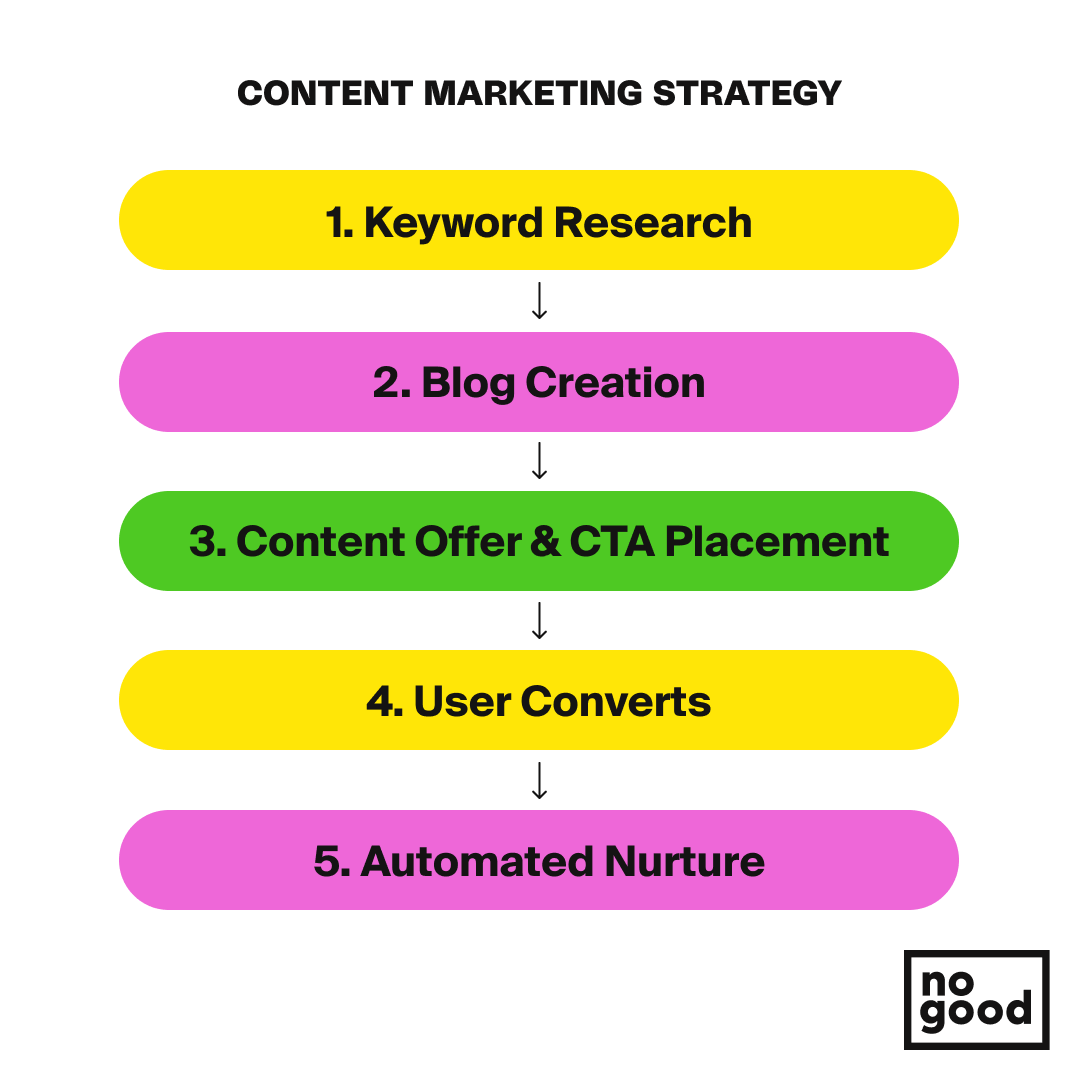Growth Marketing, digital marketing, inbound marketing; there are a thousand ways to say it but the truth is SEO is foundational in every single approach. The web has never been more competitive than it is today. Old advantages and keyword-stuffing tactics are clearly things of the past. The best content wins, SEO matters, you did not pass go, you don’t collect $200.
Being in what I consider the “SEO World” it still shocks me when business owners push SEO or organic signals to the side and focus on the immediate or more predictable path of paid search or paid social. I’m not here to bash any other channels, they all have their place and they have a way of working together but SEO should be foundational. It’s like an insurance policy.
Need help building a foundational SEO strategy?
What is Growth Marketing?
Growth marketing is utilizing data to make informed strategic decisions that will help drive revenue for brands. It focuses on building, filling, and nurturing a brand’s marketing funnel to drive efficient and sustainable growth. The result of an effective growth marketing strategy is reduced blended customer acquisition cost (CAC), improved conversion rates (CVR), and increased customer lifetime value (CLTV).
Unlike traditional marketing, growth marketing is a holistic strategy focusing on the entire customer journey from acquisition to retention. For brands looking for sustainable, long-term growth, growth marketing is the preferred strategy.
The Role of SEO in Growth Marketing
The role of SEO in growth marketing is primarily to increase organic traffic and subsequent leads generated from that traffic. Search Engine Optimization (SEO) is a foundational growth approach every business should pursue to develop an organic presence. It is pretty simple in theory, but it is executed across a wide range of SEO tactics. Here are a few:
- Keyword Research & Content Production
- On-Page Optimizations of Legacy Content
- Conversion Rate Optimization
- Technical Issue Resolution
- Competitive Analysis & Targeting
- Authority Funneling
- Crawl Restrictions
- Hopes & Prayers
- Etc.
If you’re starting from scratch and need to build up your audience, and get sign-ups, or subscribers it can be easy to pull the paid search/social lever to get predictable ROI. The truth is, you can get some of the same predictability with SEO. A solid content plan that lays out the associated traffic can be used as a way to set benchmarks for overall growth.
Understandably, businesses need to see that return on investment — especially early in their development. Even if you can’t dedicate a lot of resources to it, try to get a baseline organic presence so it can naturally build over time. This will give you a solid foundation to stand on once more resources can be allocated to that side of marketing. Love SEO and want to do more of it? Don’t let me stop you. DOUBLE DOWN!
How Does SEO Help You Grow?
SEO is a lot like tattoos, you get what you pay for. If you’d like a really nice tattoo, it probably shouldn’t be done out of someone’s mom’s basement. The same goes for your SEO.
Investing in SEO can look a lot of different ways and frankly, that much information can be covered in its own blog post (ugh, I’ll put it on the calendar…). In any configuration, your focus should be on building a content marketing foundation or growing an existing plan. I’ll say it again for those in the back row, build your content marketing foundation or grow an existing plan.
Ranking #1 for a relevant keyword is like having free ad space. If you’re sitting at the very top of search results you’re essentially investing in content once, and as long as you maintain and optimize for new competition, that’s continued ROI.

As you rank for additional keywords, that associated traffic can be given a dollar amount that it would take to replace that organic traffic with ads or paid channels. This can give your overall investment a chance to double, triple, or quadruple?!?!
How To Build an SEO Foundation
If you are successful in building a strong foundation you could see that content continues to perform over time with little maintenance if you need to focus on other strategies first. If not, again, double down.
When launching a new site, or preparing to pursue content for the first time, it’s going to take some time for your first set of rankings to come through. After your site generates some authority, rankings will become easier and quicker over time if executed properly.
1. Removal of Technical Barriers
An SEO foundation starts with a clean website with all major technical optimizations identified and implemented. An upfront SEO technical audit is always a good thing, but if you want to remain competitive and proactive instead of reactive, you should have someone dedicated to a weekly cadence of overlooking all organic signals:
- Auditing Sources
- Google Search Console
- Google Analytics
- Speed Monitoring
- Search Engine Ranking Monitoring
- Proactive metadata optimizations
- Etc.
2. Proper Tagging & Analytics Tracking
In addition to a technical audit fixes, all tagging and analytics should be in place to properly track improvements, declines and shifts in organic signals. Pursuing SEO without proper tracking is going to prevent a team from gaining insights into tests they ran or could run and how users and search engine algorithms are interacting with your site. These analytics should enable you to make effective data-driven decisions.
3. Pillar Page Content Strategy
The reason I like the pillar page and cluster model is not just because it’s what the HubSpot blog preaches, or what my SEO mentor taught me — I’ve seen it work. Time and time again it has proven true and it takes truly targeted and specific efforts.
The execution of high-quality content in this way builds authority in the area you’re trying to grow due to the bi-directional linking between pillar and cluster topics. As your content naturally accumulates more authority and elevates in rankings, it will acquire backlinks. Backlinks from authoritative sources are a signal to Google indicating others are referencing your work when conducting their research.
As these backlinks accrue, your overall site domain will start to elevate. This can have a lot of implications for your overall organic search visibility and can assist in more difficult keyword rankings and the speed at which you rank.
4. Brief Creation
An SEO brief is critical to inform the writer of important SEO signals that should be placed throughout the content. There are elements we can identify through the brief creation process that can give us an edge.
For example, utilizing a keyword research tool can help you identify the most effective and highest search volume target keywords and secondary long-tail keywords. This will help you create blog content that is most likely to increase your search engine visibility.
Additionally, an effective brief creation process can help you analyze the SERP’s current content and your direct competitors to understand the search landscape and user needs.
5. SEO Review
Right before we hit the publish button, an SEO-inclined eye should give it the final sign-off so we give our content the best send-off we can. This is just to ensure we get the best possible early results/signals so we can adjust if needed or leave it alone.
6. Monitor, Rise, Repeat
If the upfront research and content planning are sound, you should start to see traffic benefits from your efforts. Ranking takes time and can differ depending on the saturation or competition of the area, and this can differ not only on topic but from keyword to keyword within the same topic.
Executing SEO in Growth Marketing

Your holistic search ranking allows you to not only educate your potential customers, but it provides them a path directly back to your services. Along their journey, they get more and more familiar with your brand and some even trust you before they get on the phone with you. Your customers usually don’t need to be educated while they’re on the phone, they can do all this research from their phone. Why not answer their search queries?
Content To Customer
So what does all this look like? Yes, there are a lot of moving parts and templates and information. It can be overwhelming at times that’s why it’s important to have a dedicated team on top of this because it is likely at this point your competition already has a team working on it.
The whole point of keyword research is to identify the questions or ideas your target audience is wondering about. Produce helpful content to target those searches based on search intent and provide a way for them to enter and progress through the funnel. At a very high level this is what this would look like end to end:

It boils down to meeting your customers where they want to be met. You create very little friction during this process because they are already seeking out the information in hundreds if not thousands of searches every month and other relevant content is competing for those customers.
By implementing a comprehensive SEO content strategy, I have no doubt that the quality of organic search traffic and quality of leads will be exponentially higher than from paid traffic. Yes, paid is still needed and I love it, but the interactions from organic are just that, and by putting automated nurturing in place and allowing contacts to segment themselves you can be more targeted, communicate to real potential customers, save money and effort. Is that a win, win, win,…win?
Implementing an SEO Foundation
If you’re looking for a foundation or need to right the ship, implementing a foundational SEO strategy could be your north star. Using the above guide, we have no doubt that you can build a comprehensive and successful content marketing strategy.
Want to learn more about developing an effective SEO Content Strategy?




